

We are in the UK for the Easter holidays and we visit one of the country’s most iconic landmarks – Stonehenge. And Herc gets his first taste of British weather.
After spending a couple of nights in Manchester so that Goobie could meet The Flying Scotsman, we’d driven down to Salisbury in Wiltshire to see his Absolute Best Friend in the Entire World – Sophie. Sophie’s family used to be our neighbours in Cyprus until they moved back to the UK last year. Since the age of three, Goobie and Soph have been joined at the hip.
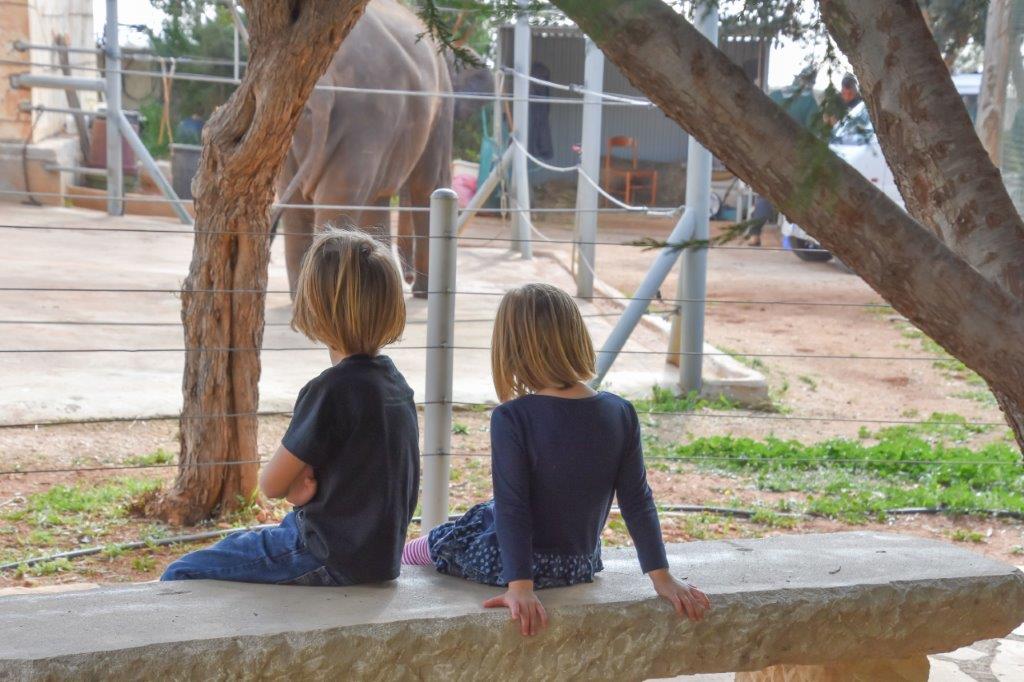
They were so excited to see one another that we thought it was a good idea to get them outside where they could run around. We decided to go to Stonehenge, just a few miles down the road.
Stonehenge is a prehistoric monument of massive stones that sits on the Salisbury Plain, close to the villages of Durrington and Amesbury. It is a UNESCO World Heritage Site and we see it every year as we pass by on the A303 on our way to the Glastonbury Festival. Both sides of my family come from the little village of Bulford nearby and so Stonehenge was part of my childhood. I remember my grandparents taking me there – parking in the small gravel car park and walking under a tunnel to the site.
I haven’t been for 20 years. And when we arrived I didn’t even realise we were there. Up ahead were two large buildings that, from a distance, I thought belonged to some sort of research facility. Gone was the gravel car park, the pedestrian tunnel. Instead we were directed into a large modern car park. Stonehenge was nowhere to be seen.
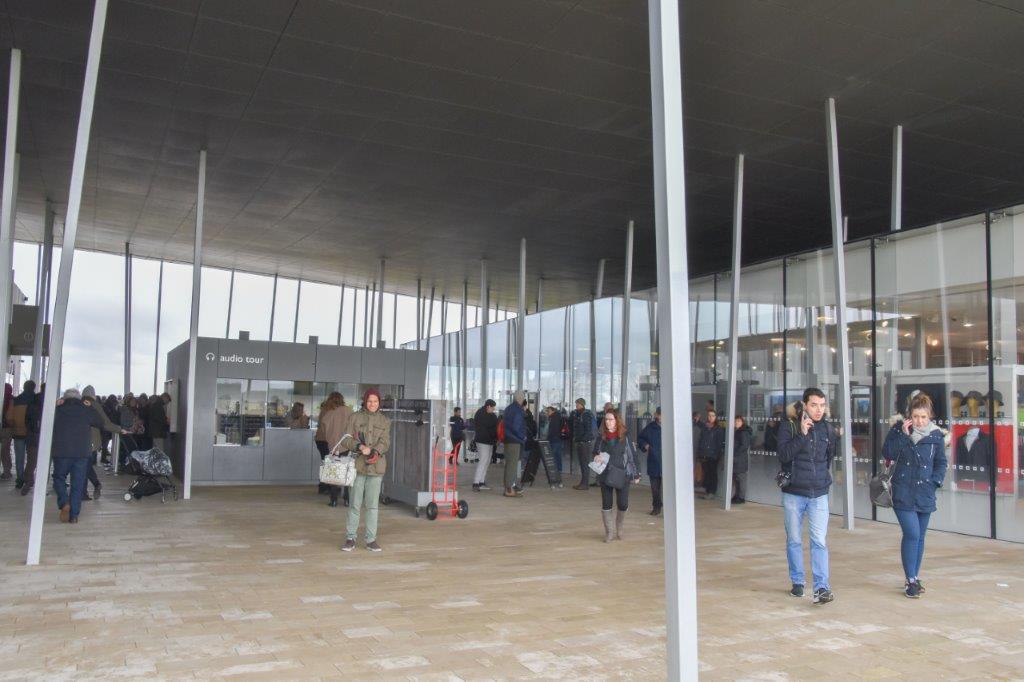
We got out of the car and were met with a blast of freezing cold wind. I’d left my woolly hat at Sophie’s house but thank god for the 20-cent charity-shop snowsuit I’d managed to get Herc just before coming to the UK.
We ran for cover to the two large buildings, which turned out to be an exhibition centre, shop and cafe. We kept the children in the warmth of the shop while Matt and Sophie’s dad joined the massive queue for tickets. The place was rammed! You could barely move for people. It was a Saturday in the Easter holidays.
Matt eventually returned with tickets. They had cost a whopping £20 each!!! My mind took me to the Tombs of the Kings in Paphos. True, it isn’t a world-famous icon but for €2.50 you can spend hours wandering through the ruins. Matt’s dad remembers Stonehenge in the less commercial days of the 70s when there were no car parks, no visitors’ centres, no tickets. He wandered through the site in a tie-dyed t-shirt, sitting on the stones for a rest. But those days could never last – the site needed protecting and, by the time I visited as a child, the stones had been roped off and you were only allowed around the periphery. I wonder whether Cyprus will become more like this in the future.
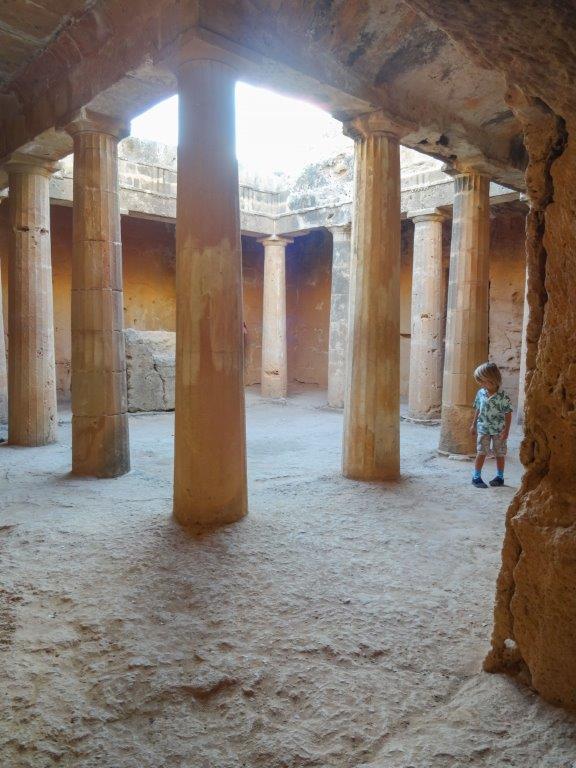
Tickets bought, we headed for the exhibition centre. Inside was a circular ‘imagination room’ as Sophie called it. On screens around the room were the Stonehenge monoliths, making it seem as though you were standing in the middle. The sun rose over the stones, bathing everyone in an orange light. It was really effective.
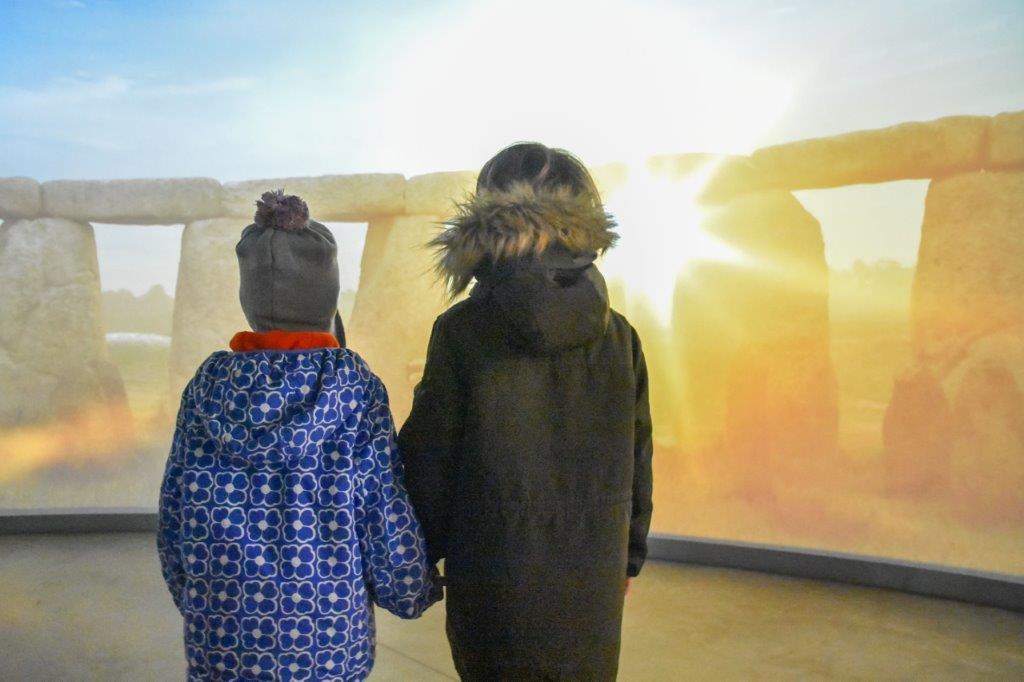
On the other side of the imagination room were two large rooms filled with exhibits from the site. Tools, a skeleton, animal bones. Stonehenge dates back to 3000BC and a timeline effectively demonstrated its age in comparison to other younger famous sites, such as the Pyramids of Giza.
Down the entire side of one wall was a massive screen with digital reconstructions of Stonehenge through the different stages of being built. This brought Stonehenge to life more than anything I’d seen and, as I stepped outside and looked across the plain, I imagined how it used to be when it was first built.
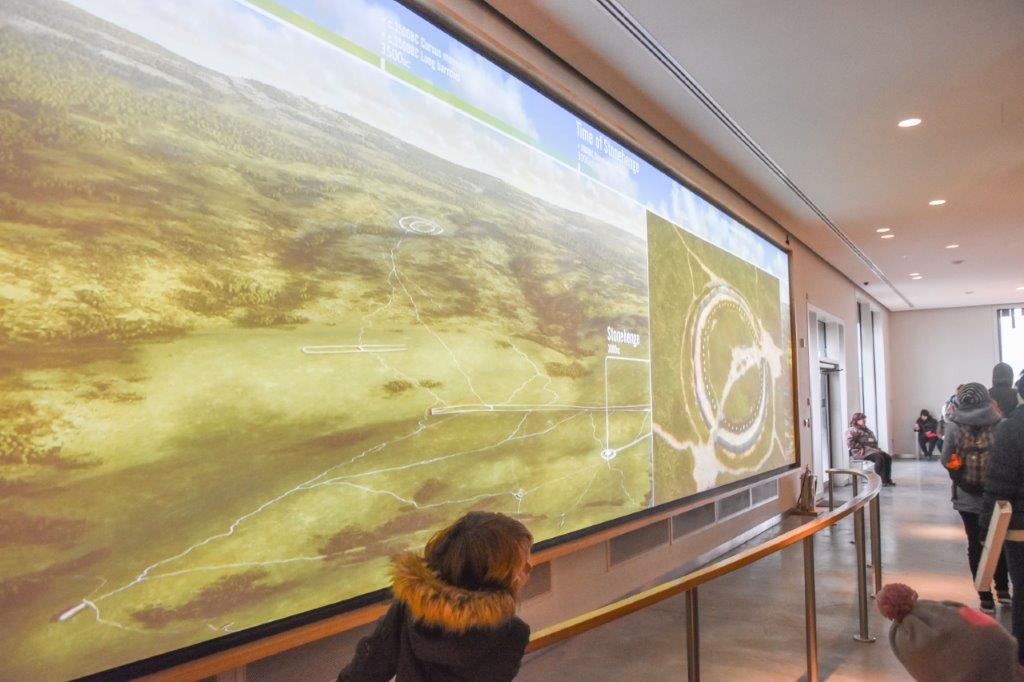
A few really good reconstructed Neolithic houses had been built outside the exhibition centre. Sophie and Goobie ran in and out of them, trying out replica tools inside.
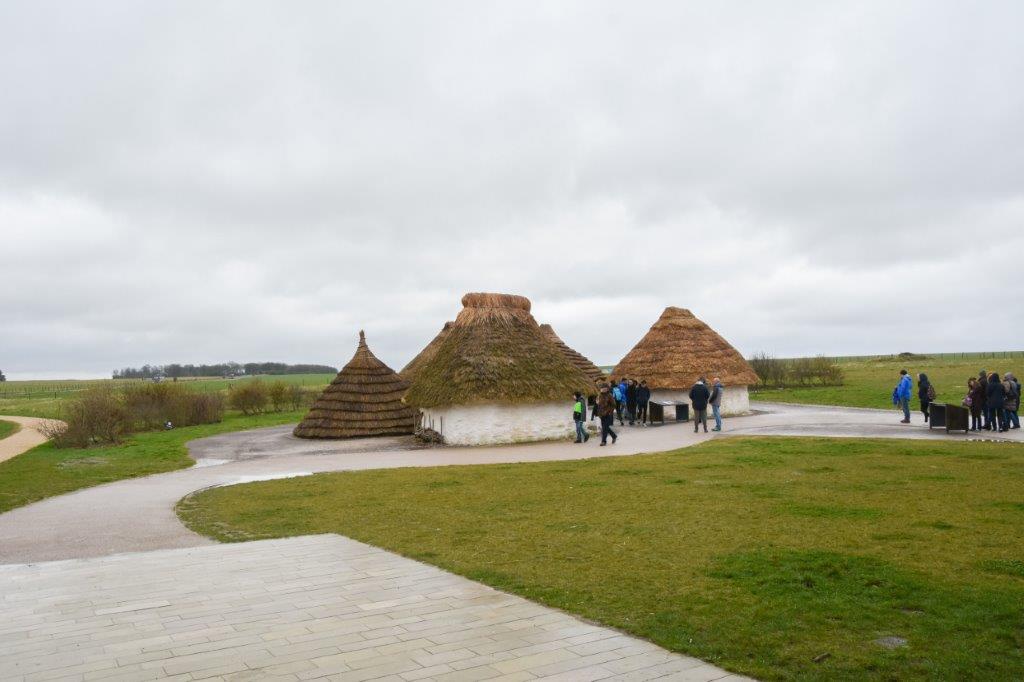
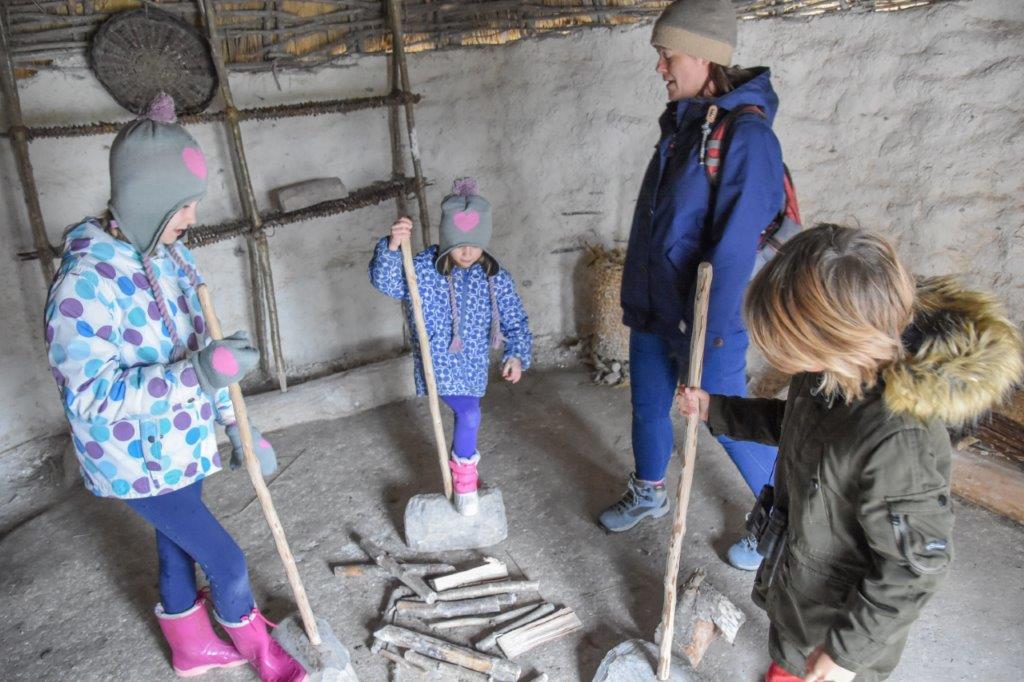
There was also a massive reconstruction of how it is thought the stones were transported to Stonehenge – using wooden rollers. Some came all the way from Wales.
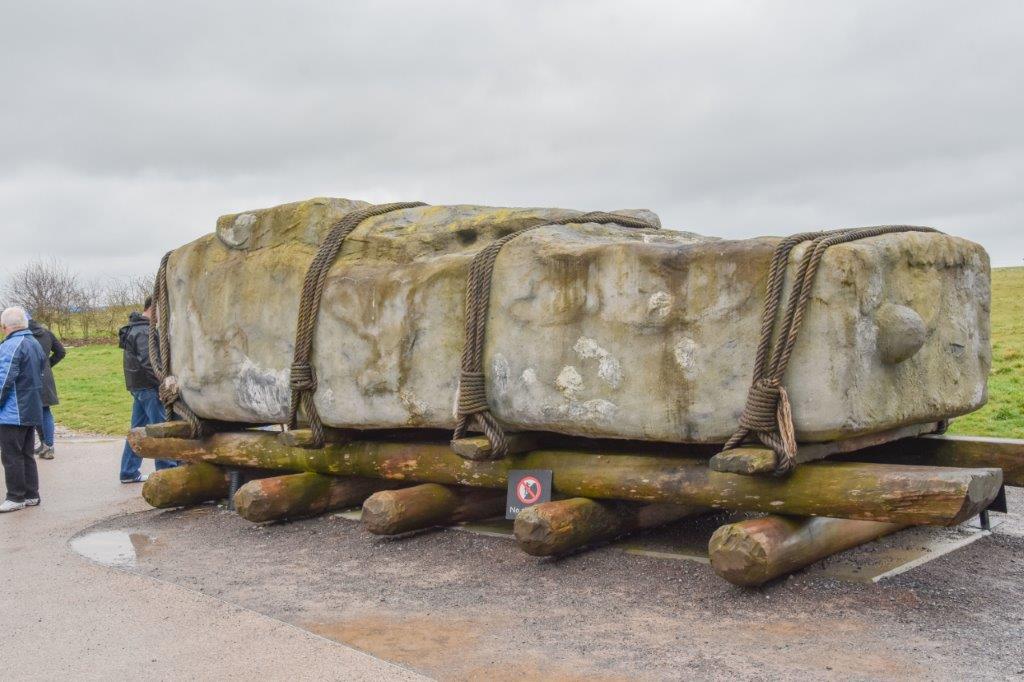
The exhibition was done really well, taking some of the sting out of the ticket prices. So, heads filled with images of Stonehenge from the past, we boarded a free bus that took us down a two-mile stretch of road to the actual site. Some brave people were walking it, heads bowed against the wind. You are allowed in the fields around the site, some dotted with ancient burial mounds. It would be lovely in the summer.
We stepped off the bus and were blasted again with an arctic wind sweeping across the plain. We looked up and there was Stonehenge in front of us.
With about five gazillion people in between.
And that’s the thing with World-Famous-Iconic-Places. All us bloody tourists. So many we can never get a decent photo without someone else’s head getting in the way. It’s hard to just stop and soak up the atmosphere because there’s always someone trying to squeeze past, or because we realise that ours is the head getting in the way of someone else’s picture. Having to keep our eyes on the children in case they get lost in the throng. It was exactly the same when we went to the Parthenon in Athens, the Forbidden City in Beijing, the Hagia Sophia in Istanbul, most of the temples in Egypt, the Taj Mahal in India.
Plus we had the arctic wind freezing our bums off.
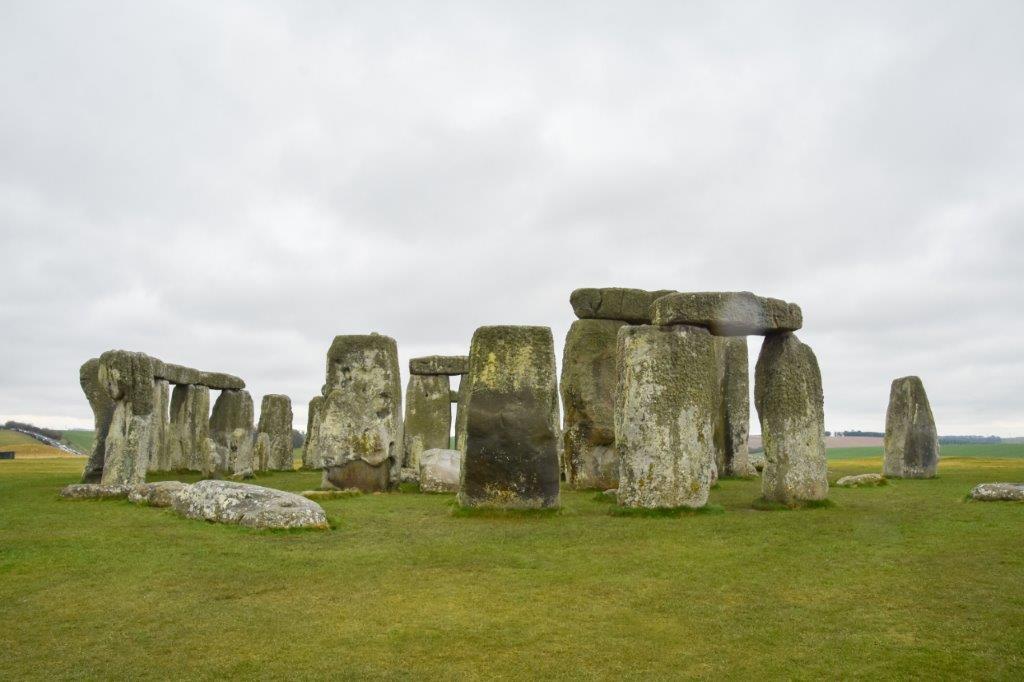
Stonehenge is magnificent, though. There is a timelessness to it that transcends the crowds and the cold. People have been admiring this place for thousands of years. It has weathered thousands of winters. And it will weather thousands more.
Once we got close to the stones, I noticed that you could no longer walk around the entire periphery, just half of the site. This, I realised, was a great idea from a photographic point of view. Once you finally found a gap in the crowds, you could take a photo of the magnificent monument without there being people in your photo around the other side. Your photo could pretend that you were the only person standing on this ancient, mystical site. Looking out across miles of countryside, feeling a deep inner connection to the past. Marvelling at how Neolithic Man managed to construct such a monument. Wondering about what it was for.
That for me was worth twenty quid.
In reality, I was trying to figure out how to get a picture of Goobie and Soph without having to ask the man next to us to move his coat sleeve out of the shot.
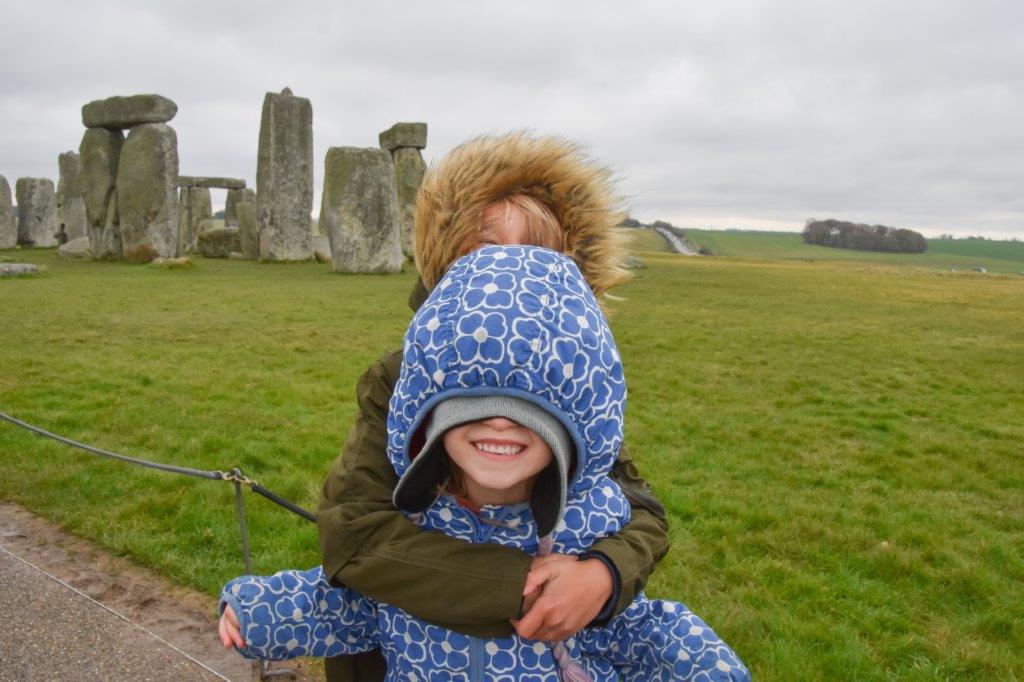
But I tried to get mystical. I tried to feel the connection to the past. But it was hard to do when all I could feel was my face aching from the cold. I suspected, like all trips to World-Famous-Iconic-Places, that I’d savour the memory more than the actual experience. And I’d feel the connection to the past while reading the guidebook on the loo that evening.
Goobie and Soph couldn’t have given a stuff about Neolithic Man, Stonehenge, or mystical experiences. They couldn’t have given a stuff about the cold weather. They were together again and that was all that mattered.
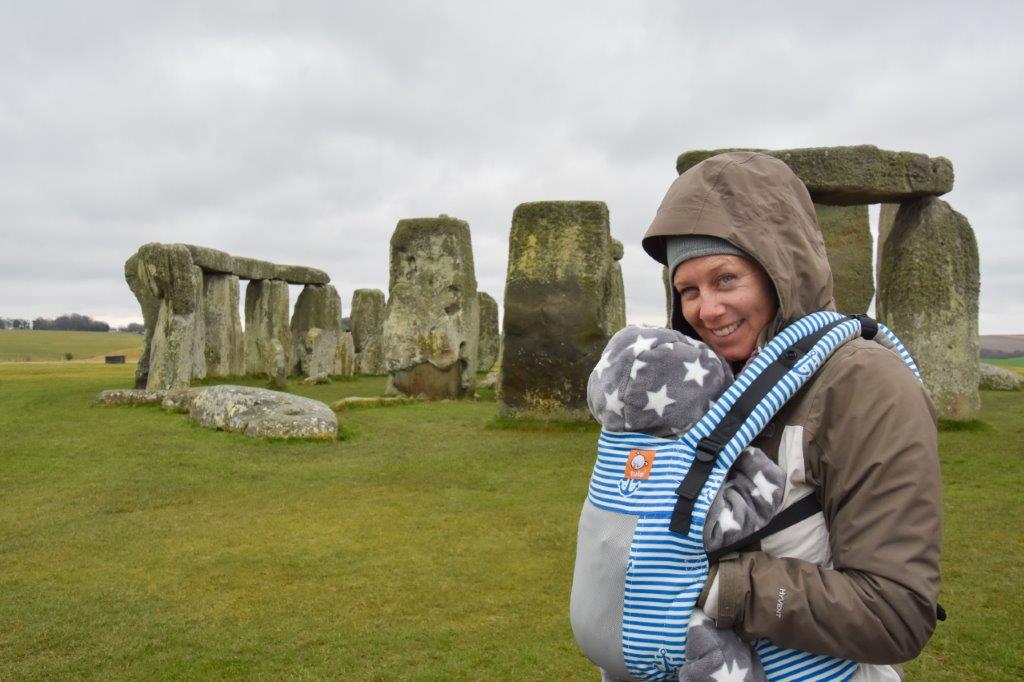
Herc wasn’t happy, though. He’d made the mistake of deciding that, since he didn’t have to faff around with photos, keep an eye on his older brother or constantly move out of everyone’s way, he could be the one person here to savour the view of this incredible place.
He lifted his head smugly out of the sling.
And was hit in the face by a massive gust of 2℃ wind.
And that was that. He screamed the rest of the way back to the visitors’ centre.
This being Britain, everyone politely ignored him.
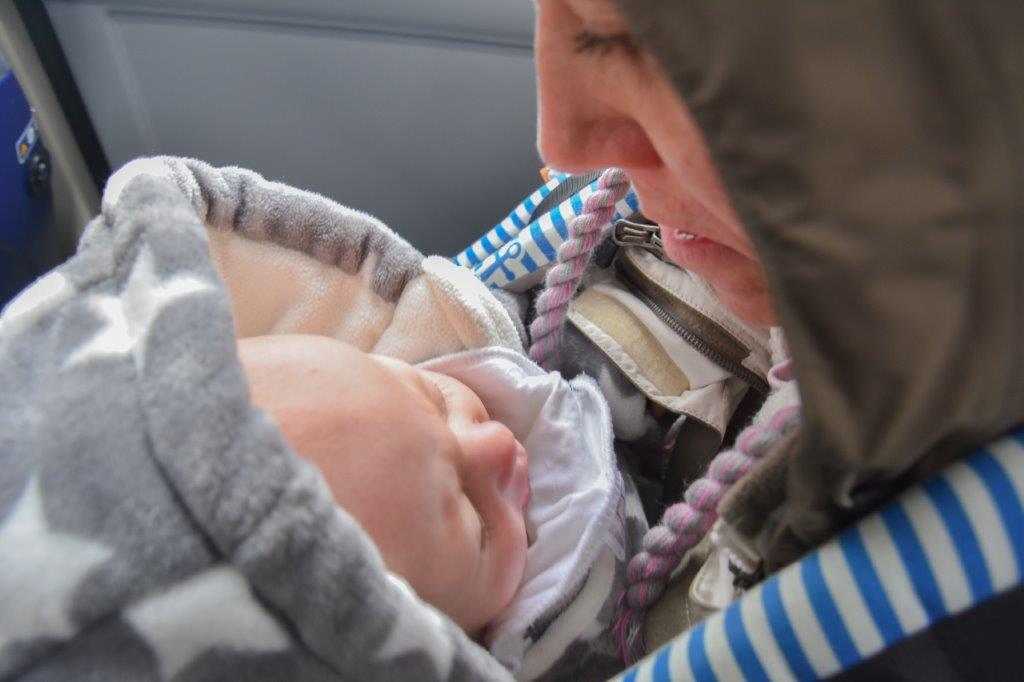
We thawed out in the cafe with cups of hot chocolate and the most delicious cheese and onion pasty I’d ever eaten. And I’ve eaten many. Herc stopped crying, eyeing us suspiciously in case anyone suggested going outside again.
I watched Goobie and Sophie mucking around, the joy on their wind-chilled faces. Children really can be the finest teachers. Who gives a stuff about ticket prices, weather and crowds? We were spending time with friends we cherish and who we missed so badly. And that was all that really mattered.
As I’m sure was the case for the five gazillion people sharing the cafe with us.
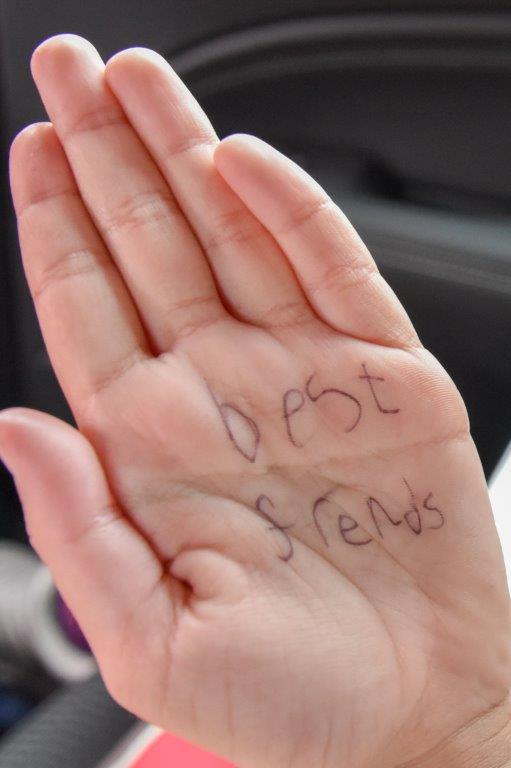
Leave a Reply